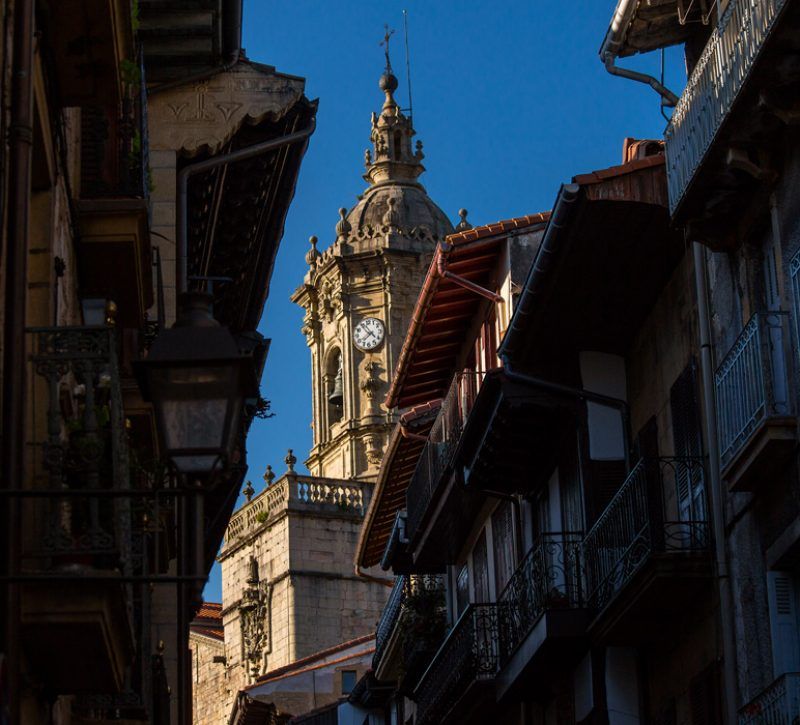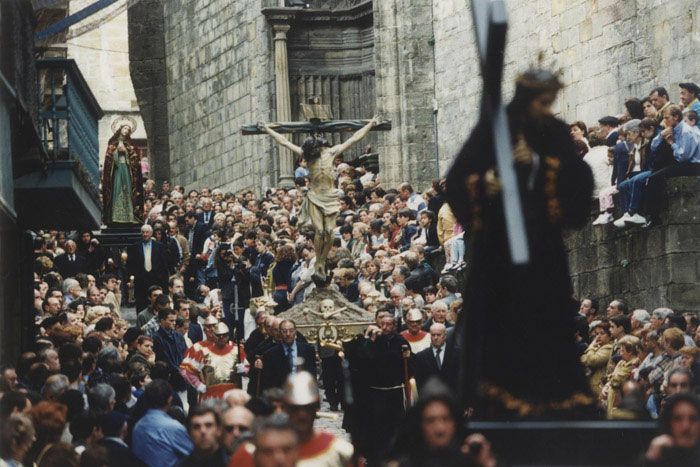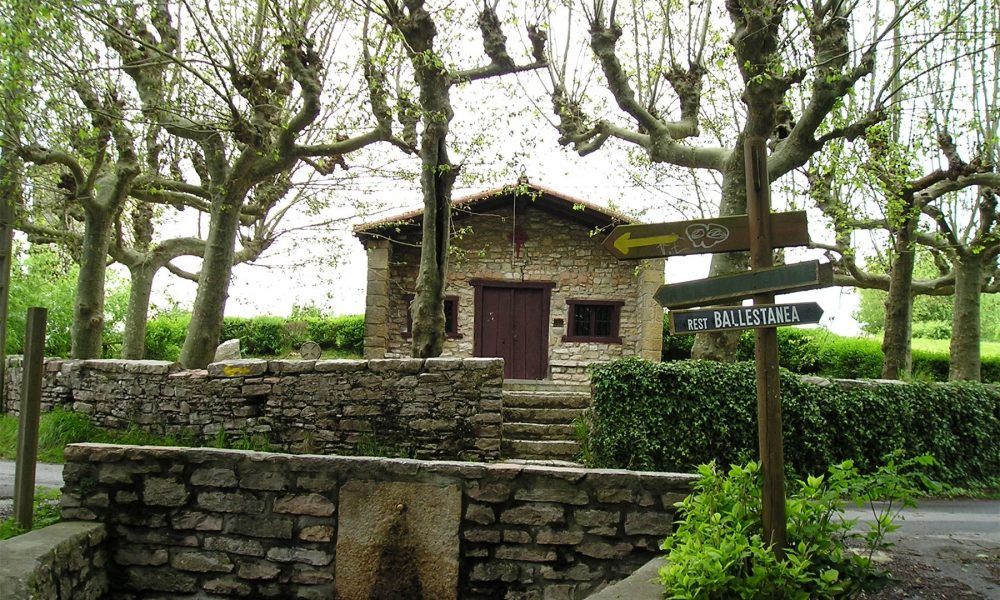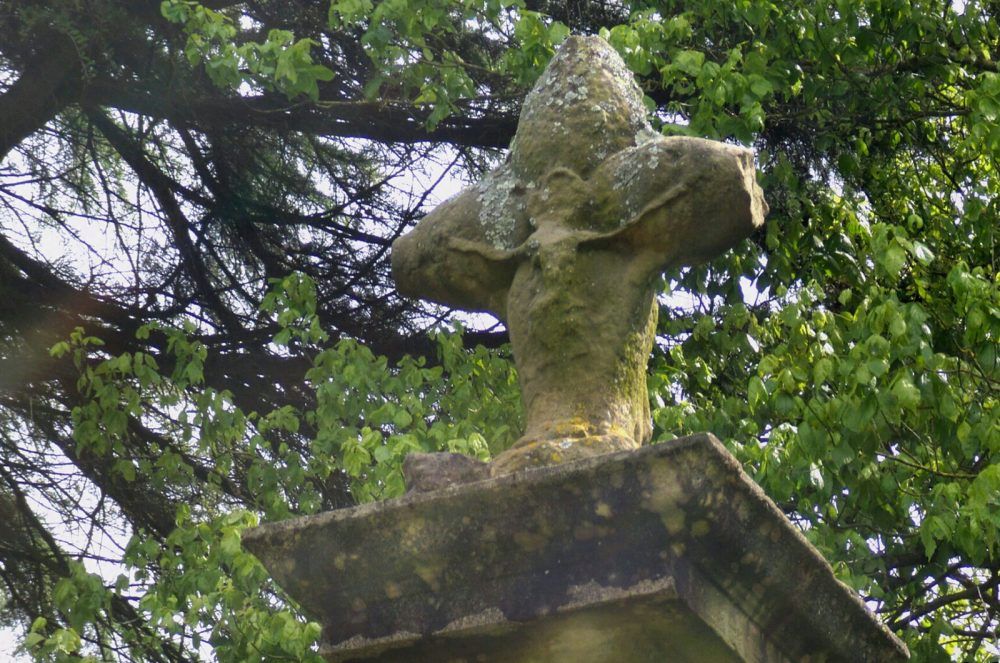Introduction
Nestled in the northernmost part of Spain, where the rugged Basque coastline meets the gentle embrace of the French border, lies a town that has quietly held onto its secrets for centuries. Hondarribia, with its rich tapestry of history, culture, and natural beauty, stands as a testament to Spain’s diverse and multifaceted heritage. While many travelers flock to the more renowned destinations of Madrid, Barcelona, or Seville, those in the know have long cherished the understated charm of this Basque gem. As the summer sun begins to wane and the allure of autumn beckons, there’s no better time to delve into the wonders of Hondarribia.
For many, the end of summer signifies a return to routine. Yet, for the intrepid traveler, September offers a golden opportunity. It’s a chance to explore without the throngs of peak-season tourists, to experience a place as the locals do. And if there’s one place in Spain that deserves such undivided attention this September, it’s undoubtedly Hondarribia.
Situated in the province of Gipuzkoa, in the heart of the Basque Country, Hondarribia is more than just a picturesque town of approximately 17,000 inhabitants. It’s a gateway to the past, a place where every cobblestone and colorful façade tells a story. Its proximity to France, just a stone’s throw away, adds another layer to its rich tapestry of influences and history.
But what truly sets Hondarribia apart? Is it the ancient walls that have stood the test of time since the Middle Ages? Or perhaps it’s the vibrant houses that line the Marina neighborhood, a nod to the town’s fishing heritage. While these are undoubtedly part of its charm, it’s the town’s gastronomic prowess that truly sets it apart. The Basque Country is renowned for its culinary delights, and Hondarribia is no exception. Fresh fish, straight from the harbor, transformed into delectable tapas, is just one of the many gastronomic experiences awaiting visitors.
Yet, the allure of Hondarribia doesn’t end with its culinary delights. A mere 20 kilometers from the provincial capital, San Sebastián, and with the French town of Hendaye just a quick boat ride away, Hondarribia is the perfect base for exploring the region. And for those who prefer nature’s wonders, the ascent to Mount Jaizkibel offers unparalleled views of the Bay of Biscay.
As we embark on this journey through Hondarribia, we invite you to discover its many facets. From its historical landmarks to its modern-day attractions, this is a town that promises an unforgettable experience. So, whether you’re a seasoned traveler or someone looking for that off-the-beaten-path destination, Hondarribia awaits. Join us as we uncover the magic of one of Spain’s true hidden gems.

Location and landscape
Nestled in the province of Guipúzcoa, Hondarribia is home to approximately 17,000 residents. Its strategic location near the French border provides a unique blend of Spanish and French influences. This coastal town boasts a harmonious blend of sea and mountain landscapes, making it a magnet for tourists. Whether you’re drawn to sandy beaches or mountainous terrains, Hondarribia offers the best of both worlds.
The town’s proximity to the Bay of Biscay ensures a maritime climate, with mild winters and temperate summers. This climate not only makes Hondarribia a year-round destination but also nurtures a rich biodiversity in its surrounding landscapes. The nearby Jaizkibel Mountain offers hiking enthusiasts a chance to explore the region’s flora and fauna, while the town’s beaches, like the Playa de Hondarribia, provide a serene escape for those looking to relax by the sea.
The Bidasoa River runs alongside the town, acting as a natural border between Spain and France. This river has played a pivotal role in Hondarribia’s history, facilitating trade and cultural exchanges over the centuries. Today, it offers a picturesque setting for boat rides and waterfront strolls.
Hondarribia’s location also makes it an ideal base for exploring the broader Basque region. The town is well-connected by road and public transport, with the vibrant city of San Sebastián just a short drive away. Moreover, the nearby French town of Hendaye can be easily accessed via a short boat ride, offering travelers a taste of two countries in one trip.
Architectural and cultural highlights
The Marina District, with its colorful fishermen’s houses, offers a stark contrast to the Old Quarter’s historic charm. This area, once home to the town’s fishing community, is now a bustling hub of restaurants and tapas bars, showcasing the best of Basque cuisine.
Beyond its natural beauty, Hondarribia is a treasure trove of architectural and cultural gems. The town’s Old Quarter, surrounded by medieval walls, transports visitors back in time. Here, one can wander through narrow cobblestone streets, discovering centuries-old churches, palaces, and traditional Basque houses adorned with wooden balconies.
Hondarribia’s rich tapestry of history is evident in its well-preserved architecture and cultural landmarks.
The Historic Quarter (EL CASCO HISTÓRICO)
A visit to Hondarribia’s Historic Quarter is a must. The grid-like layout of its streets, characteristic of cities founded in the Middle Ages, and its narrow cobblestone pathways are captivating. Starting from the Puerta de Santa María, one of the city’s two main entrances (the other being Puerta de San Nicolás), you can access the main artery, the fully cobblestoned Calle Mayor.
Puerta de Santa María
This main entrance, composed of various elements like a drawbridge and guard bodies, retains a simple arch that still holds the hinges of the door. Above the arch, the city’s coat of arms from 1694 stands out. To the left is the 16th-century Cubo de Santa María.
Calle Mayor
This street is notable for its overhanging eaves, some double and others simple, with carved brackets, wrought iron balconies, and coats of arms. Noteworthy buildings include the Casa Consistorial, a Baroque structure from 1735, and the Casa de Casadevante, where the terms of the 1638 truce were negotiated. The Casa Zuloaga houses the Historical Archive and Municipal Library, while the Casa Iriarte is known for its wooden framework and beams. The Casa Ladrón de Guevara stands out with its vitrified blue brick facade, unique in its style.
Parish Church
The Iglesia Parroquial de Santa María de la Asunción y del Manzano was built over fragments of ancient walls, replacing an earlier Romanesque church. This Gothic structure with Renaissance additions dates back to the 15th and 16th centuries. The Baroque bell tower, built in the 18th century, is the work of Francisco de Ibero. On the north side, the oldest part of the church showcases a beautiful pointed arch entrance. To the left is the city’s original coat of arms.
Plaza de Armas
This square served as a training ground for the garrison and a venue for proclamations, receptions, bullfights, and other popular festivities.
Castle of Carlos V
Originally attributed to Sancho Abarca of Navarre, this castle-palace was expanded and fortified in 1190 by another Navarrese king, Sancho el Sabio. The austere facade corresponds to the era of Carlos V. In 1968, it was converted into a Parador de Turismo.

The Walls
The walls surrounding the Historic Quarter are a testament to the city’s medieval origins. These fortifications underwent various expansions due to the city’s growth. The 15th and 16th centuries saw major fortification works, including the construction of towers, bastions, moats, and drawbridges. The Baluarte de San Felipe, built in the 17th century, was the last addition. Today, visitors can take a leisurely walk around the entire fortified enclosure, appreciating the fortification’s robustness and height.
Historical significance
Hondarribia is not just a town; it’s a living museum. One of the town’s most defining features is its medieval wall, a testament to its rich history. This fortification, standing tall since the Middle Ages, once made Hondarribia a focal point for visiting nobles and bourgeoisie. The walls, which have withstood the test of time, serve as silent witnesses to the town’s tumultuous past, from battles to sieges, from golden eras of trade to periods of cultural renaissance.
As you wander through the town, you’ll be transported back in time. The palaces, once home to influential families, showcase a blend of architectural styles, bearing witness to the changing tastes and influences over the centuries. The churches, with their towering spires and intricate stonework, have echoed with the prayers of generations, each layer of stone telling tales of faith and community.
The iconic streets of Hondarribia are perhaps the most evocative. Cobbled pathways, lined with colorfully painted houses, especially in the fishermen’s district of La Marina, offer glimpses into everyday life from centuries ago. The sounds of footsteps on stone, the soft glow of lanterns in the evening, and the distant chime of church bells create an atmosphere that’s both nostalgic and magical.

But it’s not just the physical structures that speak of history. The town’s culinary traditions, especially its seafood dishes and famous tapas, have roots that go deep into the past. The fresh catch from the port, transformed into delectable dishes, tells stories of fishermen, of ancient trade routes, and of a community that has always been deeply connected to the sea.
The town’s strategic location, near the French border, has also played a significant role in its history. It has seen rulers and armies come and go, each leaving their mark. This blend of Spanish and French influences is evident not just in the architecture, but also in the local culture, traditions, and even the cuisine.
Hondarribia and its celebrations
Nestled in the heart of Spain’s Basque Country, Hondarribia is not just renowned for its historical significance and picturesque landscapes but also for its vibrant and deeply rooted traditions. The town’s calendar is dotted with festivals that bring its streets to life, offering visitors a unique glimpse into its rich cultural tapestry.
The Feast of the Virgin of Guadalupe is the town’s primary celebration, taking place from the 7th to the 11th of September. This festival coincides with the feast day of the Virgin of Guadalupe on the 8th of September, the town’s patron saint. The festivities are a blend of religious reverence and jubilant celebration, reflecting the town’s deep spiritual roots and love for life.
Semana Santa, or Holy Week, is another significant event in Hondarribia. The Procession of Silence on Good Friday is a solemn affair, with the streets of the historic center echoing the somber footsteps of the procession. This event, known as the Procesión del Silencio, stands out as one of the few remaining Semana Santa processions in the province of Gipuzkoa.

The Alarde is a vibrant display held on the 8th of September. Rooted in a vow made to the Virgin of Guadalupe for her intercession during the town’s resistance against the French army in 1638, this event is a colorful reenactment of the town’s ancient militias. The spectacle is a blend of folklore and history, offering a window into the town’s past.

Kutxa Entrega in August celebrates the founding of one of the world’s oldest social institutions, the Hermandad and Cofradía de Mareantes de San Pedro. This fishermen’s brotherhood, established in 1361, provided members with benefits similar to modern-day social security. The annual ceremony sees a young woman leading a procession, carrying the ‘Kutxa’ on her head, symbolizing the institution’s assets. Tradition holds that the number of times she can spin with the Kutxa on her head will determine the success of that year’s catch.
Easter Week in Hondarribia is marked by the Procesión del Silencio or the Passion Play. This over 400-year-old tradition sees ten images representing the passion and death of Jesus Christ paraded through the cobbled streets of the historic center. Accompanied by Roman soldiers, the twelve apostles, and rows of men holding lit candles, the procession concludes with the haunting strains of Chopin’s funeral march played by the Municipal Band.
In essence, Hondarribia’s festivals are a testament to its rich heritage, blending ancient traditions with modern celebrations. They offer visitors an unparalleled experience, a chance to step back in time, and immerse themselves in the town’s vibrant culture. Whether you’re drawn by faith, history, or simply the joy of celebration, Hondarribia’s festivals promise memories that will last a lifetime.
Hondarribia: The Starting Point of The Camino de Santiago
Hondarribia stands as the gateway to the northern route of the famed Camino de Santiago, a pilgrimage that winds its way along Spain’s stunning Cantabrian coast.

La Magdalena
As pilgrims embark on their spiritual journey from Hondarribia, they tread the path through the La Marina district, where once stood a church dedicated to Magdalena. This ancient parish, once a beacon for the town’s fishermen, was eventually sold and replaced by a residential building. The current structure, reminiscent of the original church, stands as a testament to the town’s deep-rooted history.
Vineyards and Txakoli
Ascending towards Madalengain, a name echoing the Magdalena church, pilgrims traverse fields of vines producing the renowned Basque wine, txakoli. Notably, the path leads past the house of Masti, a significant txakoli producer whose wines even found international acclaim.
A Homestead named Botika
Further along, the route passes a farmhouse named Botika, a term denoting a merchant’s store. Historically, this was a provisioning point for pilgrims, ensuring they were well-equipped for their journey. Nearby stands the Galtzaraburu farmhouse, followed by the quaint chapel of Santiagotxo.
La Lonja, a Docking Point
Approaching from the south, one can’t help but notice the fortified city of Hondarribia, which once stood almost as an island, surrounded by the vast estuary of the river. The houses between the Santa Engracia hermitage and the Capuchin Convent, built at the foot of the mountain, form a district known as Costa. Historically, this area was accessible by boat, with the nearby sandbank, El Puntal, serving as a docking point.

The Cross of San Marcos
A notable landmark, the Cruz de San Marcos, once stood in the La Lonja district but was relocated. This stone cross, funded in 1604 by Juan Ochoa de Alchacoa, was initially placed near the Casa Lonja, overlooking the meadow behind it.
Walking the Ancient Path
Close to the mill stands the hermitage of Santa Engracia. The old path is still visible here. To the right of the hermitage, a stone staircase leads upwards, offering a glimpse of the ancient road. This path runs past the Zuloaga Haundi palace, once the countryside residence of the powerful Zuloaga family, whose primary residence in Calle Mayor now houses the town’s archive and municipal library.
Santiago Peregrino
One of the most deeply-rooted traditions is the Kutxa ceremony, a ritual performed by the Fishermen’s Brotherhood. Every year, they ascend to the main church to present their accounts and activities. As per tradition, a fisherman’s daughter carries the ‘Kutxa’ on her head during the procession. This event takes place on July 25th, the feast day of Santiago Apóstol.
Guarding Against Impostors
In the 15th century, with Spain and France at odds, there was a need to monitor the Bidasoa crossing to prevent French impostors, disguised as pilgrims, from entering. This directive came from Queen Isabella the Catholic.
Ermita de Santiagotxo
Continuing the journey, pilgrims will find the Ermita de Santiagotxo. Before reaching it, one can visit the nearby farmhouse, which today serves as a picnic spot. Historically known as Ballestania, this ancient farmhouse was once the home of a bowman. The key to the hermitage can be requested here. The hermitage, popularly known as Santiagotxo due to its small size, is located in the Arkolla district.
The Stolen Image
Inside the hermitage was an image of Santiago Peregrino, known as Santiago Beltz. However, in December 1978, this cherished image was stolen, never to be seen again. Fortunately, photographs of the statue existed, and an enlarged framed photo now graces the altar.
The Mysterious Name of Ipiztiku
The next phase of the journey involves ascending the slopes of Jaizkibel. Along the way, pilgrims pass a farmhouse with the enigmatic name Ipiztiku, which translates to ‘bishop’.
In essence, the Camino de Santiago in Hondarribia is not just a spiritual journey but also a voyage through time, offering pilgrims a chance to immerse themselves in the rich tapestry of the town’s history and traditions.
Getting to Hondarribia: Gateway to Spain’s hidden gem
Nestled in the heart of Spain’s Basque Country, Hondarribia beckons travelers with its rich history, vibrant culture, and breathtaking landscapes. But how does one reach this hidden gem? Let’s navigate the journey.
By air: The closest airport to Hondarribia is the San Sebastián Airport, located merely 2 km away. With regular flights connecting major Spanish cities and some international destinations, it’s a convenient gateway for those flying in. From the airport, a short taxi or bus ride will get you to the heart of Hondarribia.
By train: While Hondarribia doesn’t have its own train station, the nearby Irun station serves as a major hub, connecting the town to other parts of Spain and even international destinations in France. From Irun, one can easily take a bus or taxi to Hondarribia, a journey of just 10 minutes.
By road: Hondarribia is well-connected by road, with the GI-636 being the main artery linking it to other parts of the Basque Country. Those driving from major cities like Bilbao or San Sebastián will find the journey scenic and straightforward.
By sea: For a unique experience, consider arriving by boat. Hondarribia boasts a beautiful marina, making it accessible for those sailing along the northern coast of Spain.
Reaching Hondarribia is a breeze, no matter your mode of transport. Once there, the town’s charm, from its medieval walls to its picturesque streets, ensures that the journey, however short or long, is well worth it. So, pack your bags and set your course for Hondarribia – a Spanish treasure waiting to be discovered.
The unmissable allure of Hondarribia
In the vast tapestry of Spain’s tourist destinations, there are cities that scream for attention and then there are those that whisper their secrets to those willing to listen. Hondarribia belongs to the latter, a hidden gem nestled in the heart of the Basque Country, waiting to be discovered.
Its strategic location, a stone’s throw away from the French border, offers a unique blend of Spanish warmth and French sophistication. The town’s medieval walls stand as silent witnesses to its rich history, having seen countless nobles and bourgeoisie walk its cobbled streets. These walls, along with the town’s palaces, churches, and iconic streets, paint a vivid picture of a bygone era, making Hondarribia a living museum of sorts.
But it’s not just history that the town offers. The harmonious blend of sea and mountain landscapes ensures that whether you’re a beach lover or a mountain enthusiast, Hondarribia caters to all. The town’s festivals, especially the Alarde on September 8th, showcase its vibrant culture and deep-rooted traditions. And for those spiritually inclined, the town marks the beginning of the northern route of the Camino de Santiago, one of the most famous pilgrimage routes in the world.
So, why visit Hondarribia? Because in a world where tourist spots often feel manufactured and over-commercialized, Hondarribia offers authenticity. Every stone, every street, and every festival in the town tells a story, waiting for you to become a part of it. It’s a place where you can experience the true essence of Spain, away from the hustle and bustle of the more famous tourist spots.
In conclusion, if you’re looking to discover a side of Spain that remains untouched by the ravages of time and commercialization, Hondarribia should be at the top of your list. It’s not just a destination; it’s an experience, a journey back in time, and a celebration of all things Spanish. Don’t miss out on this hidden gem. After all, the best treasures are often those that are hidden in plain sight.
For a visual treat and more detailed information about what awaits you in Hondarribia, visit the official tourism website: https://hondarribiaturismo.com/. Dive deeper into the allure of this Spanish gem and let the pictures inspire your next adventure. Safe travels!





